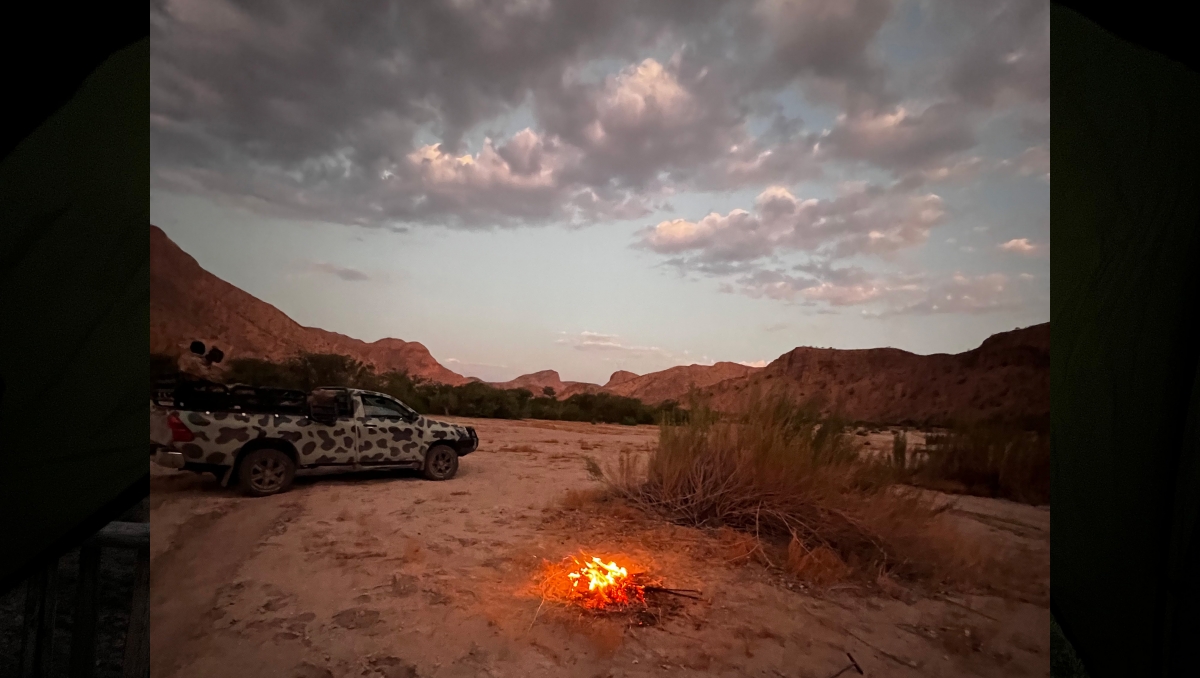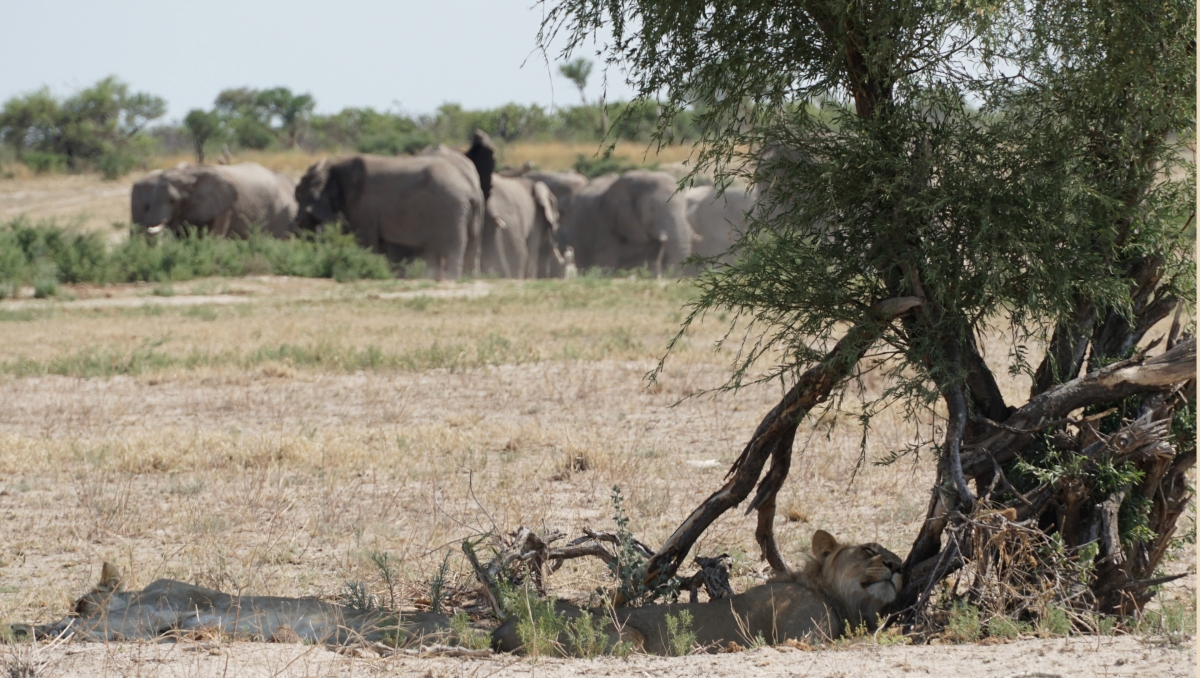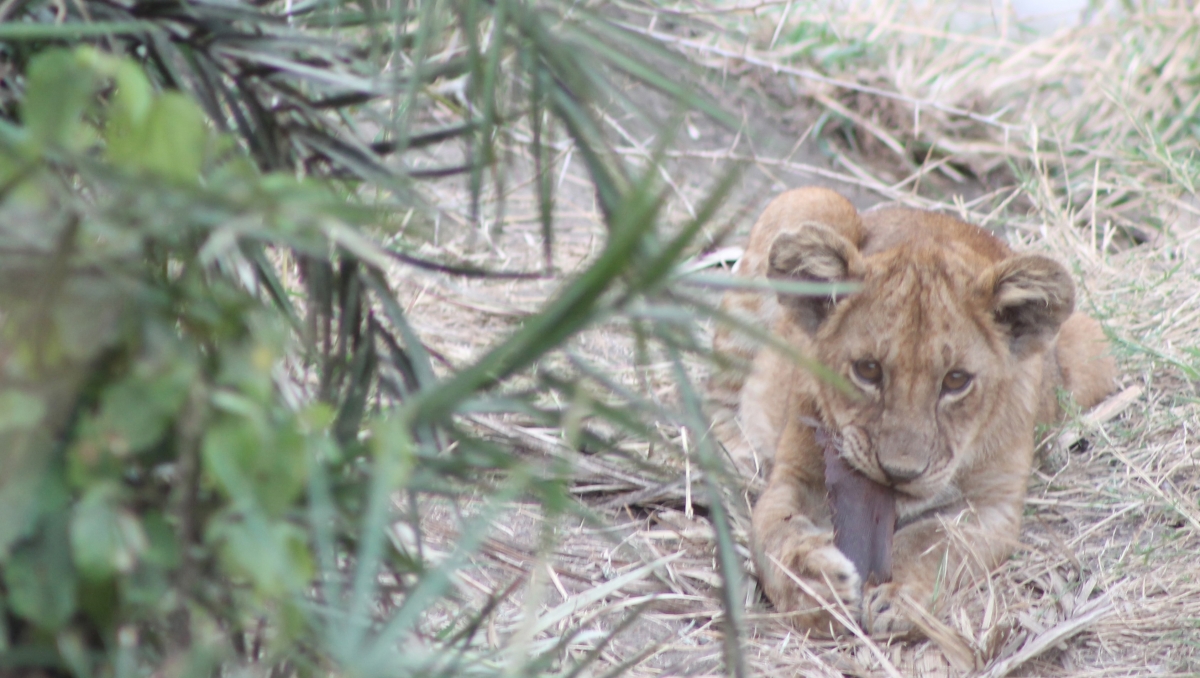In the realm of lions: insights from the field

Natalia Borrego is an expert on the social behaviour of African lions – a lion queen so to speak. Research stays in the field – in Africa – are a central part of her work. A conversation about her fascination for big cats, special challenges when doing research in the wilderness, and what we can learn from lions.
What sparked your interest for the field of collective behaviour in general and in studying lions specifically?
Natalia Borrego: My interest in lions was initially sparked by the hypothesized link between sociality and the evolution of intelligence. When I began my research career, formal studies on cognition in lions were lacking. Yet, lions, being the only social felids, presented an intriguing system for exploring this link. Following my doctoral research, which demonstrated that lions perform well on traditional tests of cognition requiring problem-solving, memory, and innovation, my focus shifted towards understanding how lions collaborate. Central to lion sociality is cooperation. This naturally spurred my curiosity about decision-making processes and the mechanisms driving collective action in highly cooperative social species, such as lions.
Could you share a memorable experience from your early days of studying lions that solidified your passion for this research?
There is not one specific moment that stands out but rather a collection of moments. Fieldwork in the African bush and the opportunity to approach complex research questions by observing lions in their natural habitat is always a memorable experience.
Currently, my passion for this research has been fuelled by technological advancements that are revolutionizing our ability to study lion behaviour. Alongside my "research partner in crime" Dr Gen Finerty, we are deploying collars with state-of-the-art tracking technology, including audio-loggers, in entire groups of lions. We recently retrieved our first round of data and are busy processing the data – documenting lions’ behaviour using a combination of audio and accelerometer data. Using the audio logger data to "eavesdrop" on the lions as they go about their day has been especially fascinating and promises to be memorable.
© Natalia BorregoCollar with bio-logger. The Bio-logger provides data about the lion’s movement, behaviour and physiology. It can also provide information about the environment in which the lion is moving.
What is the most interesting aspect of studying collective behaviour in lion prides for you?
The social dynamics of lions are particularly interesting. Lions exhibit remarkable flexibility in their social behaviours. For instance, one proposed reason for cooperative hunting by lions is as a response to the dangers and challenges posed by hunting large prey, e.g. buffalo and giraffe, which can be difficult to catch and are capable of inflicting serious injuries to lions. Contrary to expectation, we have documented lone adult female lions successfully hunting adult giraffes at our study site in Botswana.

"This suggests that the decision to hunt cooperatively or solitarily is not solely dictated by the size or danger presented by the prey but is instead a more complex behaviour influenced by a variety of ecological and social factors. Our research aims to unravel these factors and provide a deeper understanding of how lions have evolved to be as versatile in their behaviour as the landscapes they dominate."
Natalia Borrego
In your opinion, what makes lions unique in terms of collective behaviour compared to other big cats or animals in general?
One aspect of lions that set them apart is their egalitarian social structure. Contrary to ‘The Lion King’, there is no king or queen in lion societies; no single individual gets priority access to resources, whether that be access to mates or access to food after participating in a hunt. This is unique in comparison to most other social carnivores, like hyenas and wolves, and presents lions as a compelling case for studying collective behaviour. Their social behaviours raise intriguing questions about decision-making and participation without a hierarchy – how, for instance, do individuals decide to contribute to or abstain from collective actions such as hunting? The absence of a clear rank-based system invites a deeper exploration into the mechanisms of cooperation and potential for cheating (collective action problems).
https://youtu.be/eQM5cQe7lDk
What challenges do you face in the field when observing and studying lion prides?
Field research presents unique challenges. Practically speaking, the environment is unforgiving. I have worked in remote areas, some without amenities like running water or refrigeration, and while enduring extreme (>40C) heat. The terrain is rugged, and the toll on our research vehicles is substantial, which can lead to breakdowns and delay our progress. Field biologists sometimes end up needing to be "part mechanic", too. Moreover, the unpredictability of lions’ behaviour adds a layer of complexity. Being wild animals, their movements do not usually align with our research schedules. Whether it is waiting days for a sighting or weeks to successfully collar an individual, flexibility is paramount in field work. Finally, being a woman in this field can present unique challenges, despite shifting attitudes, there are lingering perceptions about women's capability to endure the demanding conditions of the field – views which are steadily being proven outdated.
Being away from family and friends can be hard. How do you stay in touch with your loved ones while away for weeks/months?
I now find the distance much easier to cope with than at the beginning of my career. My family and friends have also gotten used to my hectic schedule and long periods spent away, which makes the distance easier to handle. One huge help has been getting a phone plan that does not charge for data when I’m in the field. This way I’m able to stay in touch via messaging services. I still end up in some places without a cell signal, but nowadays even these remote areas are never too far from where there is reception.
Have there been any particularly scary or nerve-wracking moments during your fieldwork with lions?
Despite working with lions for over a decade, I have not had any encounters with lions that stand-out as exceptionally scary. Surprisingly, the most nerve-wracking moment was an encounter with a very angry giraffe. The giraffe chased our vehicle and came within inches of kicking in our windscreen and seriously injuring (potentially killing) us – at the last second, we managed to get the vehicle into reverse and back away at full speed while being chased for some distance. We think the giraffe had been harassed by tourists and thereby associated any vehicle as ‘bad’. I always appreciated how large giraffes were but never more so than in the moments when one was about to kick through my windscreen.
How do external factors, such as climate change or human-wildlife conflict, impact the behaviour of the lion prides you study?
In our research areas, lions sometimes come into conflict with humans, particularly when they prey on livestock. This can result in farmers killing the lions in retaliation. The loss of a lion from a group, whether due to human-wildlife conflict or other external factors, can impact lions’ behaviour and social cohesion. For instance, research in the Serengeti has shown that when a male lion is removed from its group, this can adversely affect the survival and reproductive prospects of the remaining males. Our research will allow us to learn more about how disruptive events impact lion behaviour. Our study is the first to simultaneously track every individual within a lion pride and collect comprehensive data using multi-sensor, high-resolution technology. This innovative method enables us to investigate lion behaviour and behavioural responses to external events, like human-wildlife conflict, in unprecedented detail.
What advice do you have for aspiring researchers interested in studying big cats, particularly lions?
"It is essential to articulate your motivations for studying big cats or any species. Consider whether your interest lies in conservation efforts or theoretical aspects such as collective behaviour. This understanding will be critical in directing your academic focus and shaping your career trajectory. Successful researchers in the field of "charismatic species", like lions, often begin with a thorough grasp of existing literature, identifying gaps in knowledge, and envisioning their unique contributions. A mere fondness for the species, while commendable, does not suffice for a successful research career; it requires a strategic and informed approach."
Natalia Borrego
Personally, while I am fond of lions, my decision to study them was not driven by a desire to research lions. Rather, lions were the best system for answering the theoretical questions that fascinate me. Although, I am fortunate that lions were best aligned with my theoretical interests; lions are a remarkable species and studying them grants me the opportunity to work in Africa's remote areas, experiencing places and wildlife that would otherwise be inaccessible.
Natalia Borrego is a postdoctoral researcher in the Cluster of Excellence “Centre for the Advanced Science of Collective Behaviour” at the University of Konstanz and the Department for The Ecology of Animal Societies at the Max Planck Institute of Animal Behavior.
Find out more about Natalia Borrego‘s work and research in the first episode of the new collective behaviour podcast "In the Swarm".
Header image: Lions in Botswana. Copyright: Natalia Borrego








